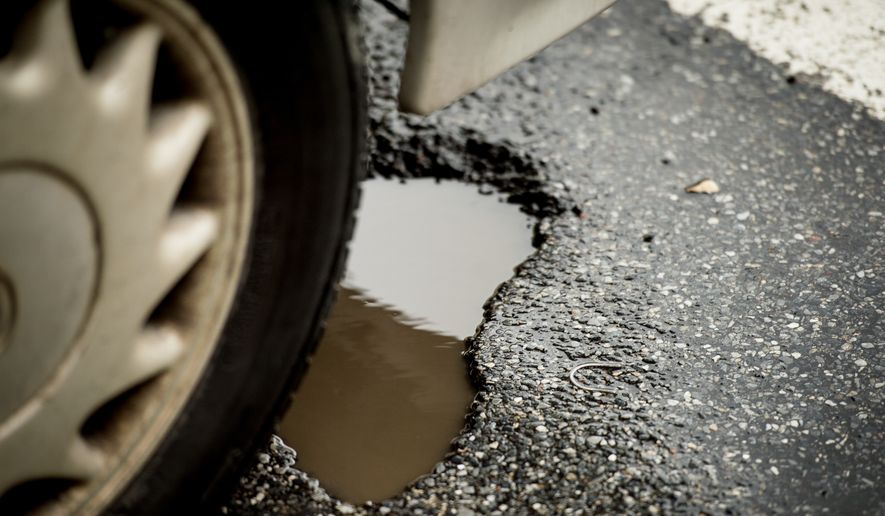As the weather warms this spring, trees will grow green leaves and cherry blossoms will bloom — but potholes will be few and far between thanks to a mild winter, transportation officials say.
“When water gets into the asphalt and freezes and expands, it creates these voids [that collapse and create potholes],” said Ellen Kamilakis, a spokeswoman for the Virginia Department of Transportation (VDOT) northern district. “Without us having these freezing and thawing cycles, [the potholes] aren’t going to blossom as much.”
This winter, the D.C. region has had no lengthy freezes and very little snow, with the three major airports reporting snowfall deficits of 5 inches or more. The temperate weather has resulted in savings for regional transportation agencies, which have had to use less road salt, plow fewer streets and repair fewer roadways.
“Did we just sleep through the whole winter?” joked Ms. Kamilakis.
District Department of Transportation (DDOT) Director Jeff Marootian said that a warm winter has contributed to fewer potholes forming, but the improved quality of the city’s roads is the main factor for his agency receiving fewer requests to fill potholes.
“We expect to see fewer potholes because our roads are in better condition than the same time last year,” Mr. Marootian said, noting that the District repaved 100 miles of roads last year. “That is in large part thanks to Mayor [Muriel] Bowser, who prioritized the resources to pave more than ever before.”
Last year, DDOT received more than 7,000 requests to fill potholes, and this year that number is just over 2,000.
However, Chris Geldart, director of the D.C. Department of Public Works, said it is still early to rule out significant snowfall this winter.
“It’s not over yet. We have been known in this region to have April snowstorms,” Mr. Geldart said. “We are keeping our posture of readiness to ensure all our equipment personal, resources, such as salt and brine, are ready.”
Shantee Felix, a spokeswoman for the Maryland State Highway Administration, said residents in the western part of the state have endured several freeze-and-thaw cycles that produce potholes.
The VDOT northern district includes Fairfax, Loudoun and Prince William counties and part of Arlington County. Its snow removal team has been deployed six times this winter, compared to 15 times last winter.
Mr. Geldart said he has enjoyed the winter so far, noting that the District has had only three snow events, compared to 14 last winter.
And Ms. Felix said Maryland has seen about 10 inches of frozen precipitation, mostly in its western and northern areas, compared to about 38 inches this time last year.
The District has budgeted more than $9 million for snow removal this fiscal year, and any leftover funds will be available for Miss Bowser to use as she deems fit.
The mayor’s office did not respond to request for comment about the leftover funds.
VDOT budgeted $205 million for its snow response for the entire commonwealth, and has used only $44 million. Last year, the agency used almost its entire snow removal budget.
Leftover snow removal money in Virginia and Maryland will be dedicated to each states’ road maintenance fund, which is tapped for repaving, filling potholes, repairing bridges and fixing damage from other weather events like flooding and strong winds, which Ms. Kamilakis said might become more prevalent with warmer weather.
She recalled last summer when flash floods hit the region and 4 to 6 inches of rain accumulated in an hour, causing serious damage to infrastructure.
Regional road crews must wait for the temperature to be above 40 degrees for several weeks before they can permanently fill any potholes that did appear this winter.
• Sophie Kaplan can be reached at skaplan@washingtontimes.com.




Please read our comment policy before commenting.